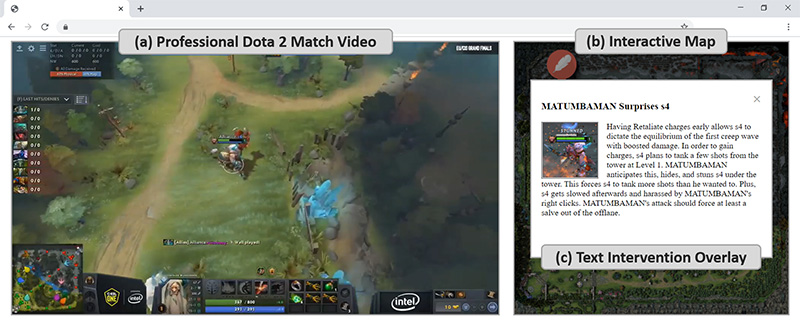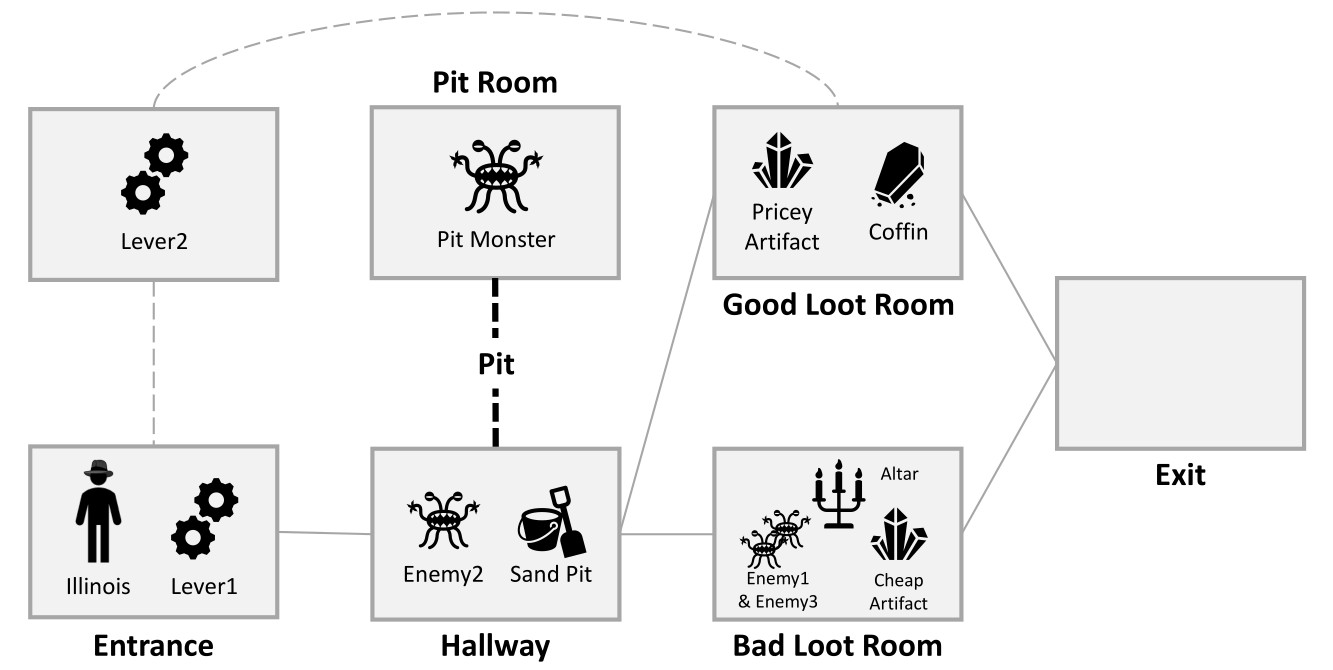Interactive Games and Media Research

School of Interactive Games and Media
Research
Our research aims at the future applications and possibilities of games.
Research Areas

The photo exhibits an online interactive testing environment running in the Google Chrome browser with three components labeled: (a) a video recording of a professional Dota 2 esports match, (b) a map with interactive icons that appear according to game events, and (c) a map overlay that provides text interventions to the viewer when icons are clicked. This is from a project that falls under narrative and cognitive modeling, and was published at ACM Interactive User Interfaces 2021.
This graph represents all possible choices a player can make in a simple text game visualized as 36 choice nodes in 15 trees. This project falls under narrative modeling and generation, search, automated game design, and procedural content generation. It was published at the International Conference on the Foundations of Digital Games 2019.

This diagram represents a text adventure game level that was procedurally generated using evolutionary search. The level was selected from a space of over 1,000 possible level designs, because it best accommodates multiple playstyles at the same time: a warrior who wants to attack as many enemies as possible, a collector who wants to find artifacts, a sneaker who wants to avoid enemies, and a speedrunner who wants to reach the end of the game as quickly as possible. By simulating each of these playstyles with an AI gameplaying agent and tinkering with the elements of the level design, the algorithm was able to converge on a design that maximally accommodates each style type.







Research Labs
- XR Lab in MAGIC
- Center for Geographic Information Science and Technology
- Console Development Lab
- Graphics Lab (in conjunction with RIT’s CS Dept)
- Hacker Suite in MAGIC
- The Initiative in Religion, Culture, and Policy @ MAGIC
- Interaction, Media, and Learning Lab
- Niantic x RIT Geo Games and Media Research Lab
- Open@RIT
Research Highlights
Artificial Intelligence - Justus Robertson

The photo exhibits an online interactive testing environment running in the Google Chrome browser with three components labeled: (a) a video recording of a professional Dota 2 esports match, (b) a map with interactive icons that appear according to game events, and (c) a map overlay that provides text interventions to the viewer when icons are clicked. This is from a project that falls under narrative and cognitive modeling, and was published at ACM Interactive User Interfaces 2021.
This graph represents all possible choices a player can make in a simple text game visualized as 36 choice nodes in 15 trees. This project falls under narrative modeling and generation, search, automated game design, and procedural content generation. It was published at the International Conference on the Foundations of Digital Games 2019.

This diagram represents a text adventure game level that was procedurally generated using evolutionary search. The level was selected from a space of over 1,000 possible level designs, because it best accommodates multiple playstyles at the same time: a warrior who wants to attack as many enemies as possible, a collector who wants to find artifacts, a sneaker who wants to avoid enemies, and a speedrunner who wants to reach the end of the game as quickly as possible. By simulating each of these playstyles with an AI gameplaying agent and tinkering with the elements of the level design, the algorithm was able to converge on a design that maximally accommodates each style type.






























